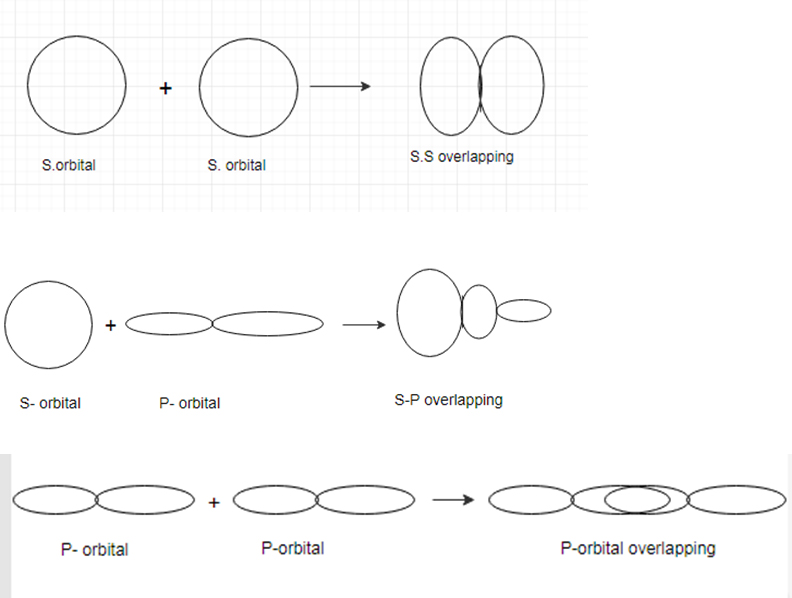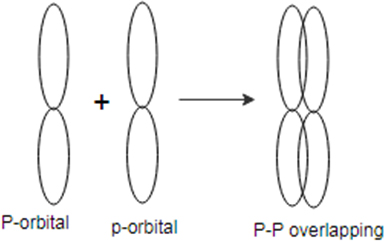
Chemistry: Structure and Properties Custom Edition for Rutgers University General Chemistry
15th Edition
ISBN: 9781269935678
Author: Nivaldo J. Tro
Publisher: Pearson Education
expand_more
expand_more
format_list_bulleted
Concept explainers
Question
Chapter 13, Problem 17E
Interpretation Introduction
Interpretation:
There are two types of covalent bond
Sigma bond bond
Sigma bond: A sigma bond is a covalent bond which is formed by the head on overlap of two atomic orbitals.

Bond:
A bond is a covalent bond which is formed by the side- to side overlap of two atomic orbitals.

Concept introduction:
bond form independently while bond always form with bond. Bond is stronger than bond. As size of atomic orbital increase the tendency of formation of bond decreases.
To determine:
The reason silicon form only single bonds with oxygen, but carbon, which is in the same family as silicon, forms double bonds with oxygen in many compounds.
Expert Solution & Answer
Want to see the full answer?
Check out a sample textbook solution
Students have asked these similar questions
Zeolites: environmental applications.
" is
The structure of the bicarbonate (hydrogen carbonate) ion, HCO3-, HCO3
best described as a hybrid of several contributing resonance forms, two of which
are shown here.
HO
:0:
:Ö:
HO
+
Bicarbonate is crucial for the control of body pH (for example, blood pH:
7.4). A more self-indulgent use is in baking soda, where it serves as a
source of CO2 CO₂ 2 gas, which gives bread and pastry their fluffy
constituency.
(i) Draw at least one additional resonance form.
=
(ii) Using curved "electron-pushing" arrows, show how these Lewis structures may
be interconverted by movement of electron pairs. (iii) Determine which form or
forms will be the major contributor(s) to the real structure of bicarbonate,
explaining your answer on the basis of the criteria in Section 1-5.
Which of these is the best use of a volumetric flask?
measuring how much liquid it contains
delivering a precise amount of liquid to another container
holding solutions
making solutions of precise concentration
Chapter 13 Solutions
Chemistry: Structure and Properties Custom Edition for Rutgers University General Chemistry
Ch. 13 - Determine what state this substance is in at 1 atm...Ch. 13 - Prob. 2SAQCh. 13 - Prob. 3SAQCh. 13 - Prob. 4SAQCh. 13 - Prob. 5SAQCh. 13 - Prob. 6SAQCh. 13 - Prob. 7SAQCh. 13 - Prob. 8SAQCh. 13 - Prob. 9SAQCh. 13 - Prob. 10SAQ
Ch. 13 - What is a phase diagram?Ch. 13 - Draw a generic phase diagram and label its...Ch. 13 - What is the significance of crossing a line in a...Ch. 13 - What is graphene? Why is graphene unique?Ch. 13 - Prob. 5ECh. 13 - What is a crystalline lattice? How is the lattice...Ch. 13 - Prob. 7ECh. 13 - Prob. 8ECh. 13 - What is the difference between hexagonal closest...Ch. 13 - What are the three basic types of solids and the...Ch. 13 - Prob. 11ECh. 13 - What kinds of forces hold each of the three basic...Ch. 13 - Prob. 13ECh. 13 - Prob. 14ECh. 13 - Prob. 15ECh. 13 - Prob. 16ECh. 13 - Prob. 17ECh. 13 - Prob. 18ECh. 13 - Prob. 19ECh. 13 - Consider the phase diagram for iodine shown here....Ch. 13 - Prob. 21ECh. 13 - Prob. 22ECh. 13 - Prob. 23ECh. 13 - Prob. 24ECh. 13 - Prob. 25ECh. 13 - An X-ray beam of unknown wavelength is diffracted...Ch. 13 - Prob. 27ECh. 13 - Determine the coordination number for each...Ch. 13 - Prob. 29ECh. 13 - Molybdenum crystallizes with the body-centred unit...Ch. 13 - Prob. 31ECh. 13 - An atom has a radius of 142 pm and crystallizes in...Ch. 13 - Rhodium has a density of 12.41 g / cm3 and...Ch. 13 - Barium has a density of 3.59 g/cm3 and...Ch. 13 - Prob. 35ECh. 13 - Palladium crystallizes with a face-centered cubic...Ch. 13 - Prob. 37ECh. 13 - Identify each solid as molecular, ionic, or...Ch. 13 - Which solid has the highest melting point? Why?...Ch. 13 - Which solid has the highest melting point? Why?...Ch. 13 - Which solid in each pair has the higher melting...Ch. 13 - Which solid in each pair has the higher melting...Ch. 13 - Prob. 43ECh. 13 - Prob. 44ECh. 13 - Prob. 45ECh. 13 - Prob. 46ECh. 13 - The unit cells for cesium chloride and barium(ll)...Ch. 13 - Prob. 48ECh. 13 - Prob. 49ECh. 13 - Prob. 50ECh. 13 - Prob. 51ECh. 13 - Prob. 52ECh. 13 - Prob. 53ECh. 13 - Prob. 54ECh. 13 - Prob. 55ECh. 13 - Prob. 56ECh. 13 - Prob. 57ECh. 13 - The density of an unknown metal is 12.3 g/cm3 and...Ch. 13 - Prob. 59ECh. 13 - Consider a planet where the pressure of the...Ch. 13 - An unknown metal is found to have a density of...Ch. 13 - Prob. 62ECh. 13 - Potassium chloride crystallizes in the rock salt...Ch. 13 - Calculate the fraction of empty space in cubic...Ch. 13 - Prob. 65ECh. 13 - Prob. 66ECh. 13 - Prob. 67E
Knowledge Booster
Learn more about
Need a deep-dive on the concept behind this application? Look no further. Learn more about this topic, chemistry and related others by exploring similar questions and additional content below.Similar questions
- You're competing on a Great British television game show, and you need to bake a cake. The quantity for each ingredient is given in grams, but you haven't been given a kitchen scale. Which of these properties would correlate with the mass of a baking ingredient like eggs or milk? Check all that apply. depth of color viscosity volume densityarrow_forwardDraw a Lewis structure for each of the following species. Again, assign charges where appropriate. a. H-H¯ b. CH3-CH3 c. CH3+CH3 d. CH3 CH3 e. CH3NH3+CH3NH3 f. CH30-CH3O¯ g. CH2CH2 - h. HC2-(HCC) HC2 (HCC) i. H202×(HOOH) H₂O₂ (HOOH) Nortonarrow_forwardIs molecule 6 an enantiomer?arrow_forward
- Show work. Don't give Ai generated solutionarrow_forwardCheck the box under each structure in the table that is an enantiomer of the molecule shown below. If none of them are, check the none of the above box under the table. Molecule 1 Molecule 2 Molecule 3 ----||| Molecule 4 Molecule 5 Molecule 6 none of the above mm..arrow_forwardShow work. don't give Ai generated solutionarrow_forward
- Check the box under each structure in the table that is an enantiomer of the molecule shown below. If none of them are, check the none of the above box under the table. Molecule 1 Molecule 2 Molecule 3 ----||| Molecule 4 Molecule 5 Molecule 6 none of the above mm..arrow_forwardUse the vapor-liquid equilibrium data at 1.0 atm. for methanol-water (Table 2-8 ) for the following: If the methanol vapor mole fraction is 0.600, what is the methanol liquid mole fraction? Is there an azeotrope in the methanol-water system at a pressure of 1.0 atmospheres? If water liquid mole fraction is 0.350, what is the water vapor mole fraction? What are the K values of methanol and of water at a methanol mole fraction in the liquid of 0.200? What is the relative volatility αM-W at a methanol mole fraction in the liquid of 0.200?arrow_forwardCheck the box under each structure in the table that is an enantiomer of the molecule shown below. If none of them are, check the none of the above box under the table. || |II***** Molecule 1 | Molecule 4 none of the above Molecule 2 Molecule 3 Х mm... C ---||| *** Molecule 5 Molecule 6arrow_forward
- is SiBr4 Silicon (IV) tetra Bromine? is KClO2 potassium dihypochlorite ?arrow_forward"יוון HO" Br CI Check the box under each structure in the table that is an enantiomer of the molecule shown below. If none of them are, check the none of the above box under the table. Molecule 1 Molecule 2 Molecule 3 Br Br Br HO OH H CI OH ✓ Molecule 4 Molecule 5 Molecule 6 CI Br יייון H Br OH OH CI Br ☐ none of the above × Garrow_forwardUS2 Would this be Uranium (II) diSulfide?arrow_forward
arrow_back_ios
SEE MORE QUESTIONS
arrow_forward_ios
Recommended textbooks for you
 Chemistry for Engineering StudentsChemistryISBN:9781337398909Author:Lawrence S. Brown, Tom HolmePublisher:Cengage Learning
Chemistry for Engineering StudentsChemistryISBN:9781337398909Author:Lawrence S. Brown, Tom HolmePublisher:Cengage Learning Chemistry: Principles and PracticeChemistryISBN:9780534420123Author:Daniel L. Reger, Scott R. Goode, David W. Ball, Edward MercerPublisher:Cengage Learning
Chemistry: Principles and PracticeChemistryISBN:9780534420123Author:Daniel L. Reger, Scott R. Goode, David W. Ball, Edward MercerPublisher:Cengage Learning Chemistry & Chemical ReactivityChemistryISBN:9781337399074Author:John C. Kotz, Paul M. Treichel, John Townsend, David TreichelPublisher:Cengage Learning
Chemistry & Chemical ReactivityChemistryISBN:9781337399074Author:John C. Kotz, Paul M. Treichel, John Townsend, David TreichelPublisher:Cengage Learning Chemistry & Chemical ReactivityChemistryISBN:9781133949640Author:John C. Kotz, Paul M. Treichel, John Townsend, David TreichelPublisher:Cengage Learning
Chemistry & Chemical ReactivityChemistryISBN:9781133949640Author:John C. Kotz, Paul M. Treichel, John Townsend, David TreichelPublisher:Cengage Learning Chemistry by OpenStax (2015-05-04)ChemistryISBN:9781938168390Author:Klaus Theopold, Richard H Langley, Paul Flowers, William R. Robinson, Mark BlaserPublisher:OpenStax
Chemistry by OpenStax (2015-05-04)ChemistryISBN:9781938168390Author:Klaus Theopold, Richard H Langley, Paul Flowers, William R. Robinson, Mark BlaserPublisher:OpenStax Chemistry: The Molecular ScienceChemistryISBN:9781285199047Author:John W. Moore, Conrad L. StanitskiPublisher:Cengage Learning
Chemistry: The Molecular ScienceChemistryISBN:9781285199047Author:John W. Moore, Conrad L. StanitskiPublisher:Cengage Learning

Chemistry for Engineering Students
Chemistry
ISBN:9781337398909
Author:Lawrence S. Brown, Tom Holme
Publisher:Cengage Learning

Chemistry: Principles and Practice
Chemistry
ISBN:9780534420123
Author:Daniel L. Reger, Scott R. Goode, David W. Ball, Edward Mercer
Publisher:Cengage Learning

Chemistry & Chemical Reactivity
Chemistry
ISBN:9781337399074
Author:John C. Kotz, Paul M. Treichel, John Townsend, David Treichel
Publisher:Cengage Learning

Chemistry & Chemical Reactivity
Chemistry
ISBN:9781133949640
Author:John C. Kotz, Paul M. Treichel, John Townsend, David Treichel
Publisher:Cengage Learning

Chemistry by OpenStax (2015-05-04)
Chemistry
ISBN:9781938168390
Author:Klaus Theopold, Richard H Langley, Paul Flowers, William R. Robinson, Mark Blaser
Publisher:OpenStax

Chemistry: The Molecular Science
Chemistry
ISBN:9781285199047
Author:John W. Moore, Conrad L. Stanitski
Publisher:Cengage Learning
NEET Chemistry | Group 14 Carbon Family | Theory & Problem Solving | In English | Misostudy; Author: Misostudy;https://www.youtube.com/watch?v=enOGIrcHh54;License: Standard YouTube License, CC-BY